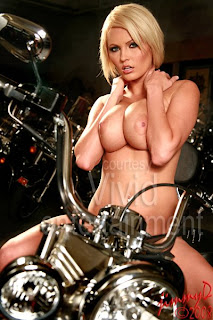 My favorite little photo forum, SuperShoots.net, is hosting a "Beauty in Motion" challenge. Cool! SuperShoot's challenge is to capture a person or thing, while depicting movement, with extra credit given for effective use of motion blur.
My favorite little photo forum, SuperShoots.net, is hosting a "Beauty in Motion" challenge. Cool! SuperShoot's challenge is to capture a person or thing, while depicting movement, with extra credit given for effective use of motion blur.I asked JT, the Yoda-like administrator of SuperShoots, if that extra credit would be awarded for in-camera creation of motion-blur or something achieved in post? He responded that, assuming viewers could tell the difference, creative use of in-camera trickery would be given more weight.
The SuperShoots challenge reminds me I had planned to write a review of a book I recently purchased: Bryan Peterson's Understanding Shutter Speed: Creative Action and Low-Light Photography Beyond 1/125 Second.
Shutter speed sometimes seems like pork: You know, pork being the other white meat. While the creative use of aperture is more often discussed, shutter speed almost feels like it suffers from Rodney Dangerfield syndrome. But that's far from the truth. Creatively, appropriate shutter speed is as important as aperture and other variables for capturing images that reflects the photographer's vision for those images.
We all know that fast shutter speeds freezes action. Leastwise, we all should know it. Fast shutter speeds are, quite possibly, the most commonly-seen creative use of shutter speeds. Sports photography often depicts the use of fast shutter speeds to capture all those competitive, decisive moments or to freeze a moment that, otherwise, would fly right past our abilities to see. Peterson's book certainly spends quality time on the subject of fast shutter speeds.
Where the book really sings is when it discusses slow shutter speeds, i.e., shutter speeds used for low-light photography or to infer motion. Anyone who hopes to successfully participate in SuperShoots challenge, but who has had little experience using slow shutter speeds, will be better equipped--knowledge equipped--with some help from Peterson's book. I don't mean to only focus on slow shutter speeds to produce a sense of motion. Photographers hoping to sharpen their skills shooting in most any low-light environment (night shooting, etc.) will benefit from Peterson's book. In fact, anyone who wishes to expand their photography skills awareness, especially in the area of creative use of shutter speeds (for all sorts of applications) will benefit with the purchase of this book. Best of all, it's very moderately priced at $16.47.
Peterson's Understanding Shutter Speed: Creative Action and Low-Light Photography Beyond 1/125 Second
If, like me, you already own Peterson's Understanding Exposure: How to Shoot Great Photographs with a Film or Digital Camera (Updated Edition),
I would have loved to post an image depicting beauty in motion, illustrating the creative use of shutter speed in my pretty girl photography but, alas, I don't seem to have such an image in my files. You'll just have to make do with another gratuitous picture of a pretty girl, sans clothing, to accompany this post. Had I captured the lovely Hannah on that Harley while it was moving, I might have taken a shot attempting to depict motion blur. Unfortunately, leastwise prior to reading Peterson's book, I doubt I would have been too adept at doing so. Maybe that's why I bought his book?

2 comments:
I've also used slow-shutter with a flash to create streaks of light, some of different colors, on a dance floor at galas where the dance floor has no lighting (ie a large hall with high ceilings and all the lights turned down low.) Where even a Nikon D3 at 64,000 ISO might have trouble. :-)
The problem is that you can only do so much of that, and your photos all start to look the same.
Peter-- I absolutely agree. Over-use of any of photography's methods of trickery will make one's work seem similar. But when shooters have well-filled bags of tricks, and they use those tricks selectively and appropriately, they become more versatile and their work more interesting.
Post a Comment